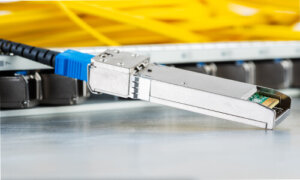Optical fiber connector is a device for detachable (movable) connection between optical fiber and optical fiber. It precisely butts the two end faces of optical fiber so that the optical energy output by the transmitting optical fiber can be coupled to the receiving optical fiber to the maximum extent, and to minimize the impact on the system due to its intervention in the optical link, this is the basic requirement of the fiber optic connector. To a certain extent, fiber optic connectors also affect the reliability and performance of optical transmission systems.
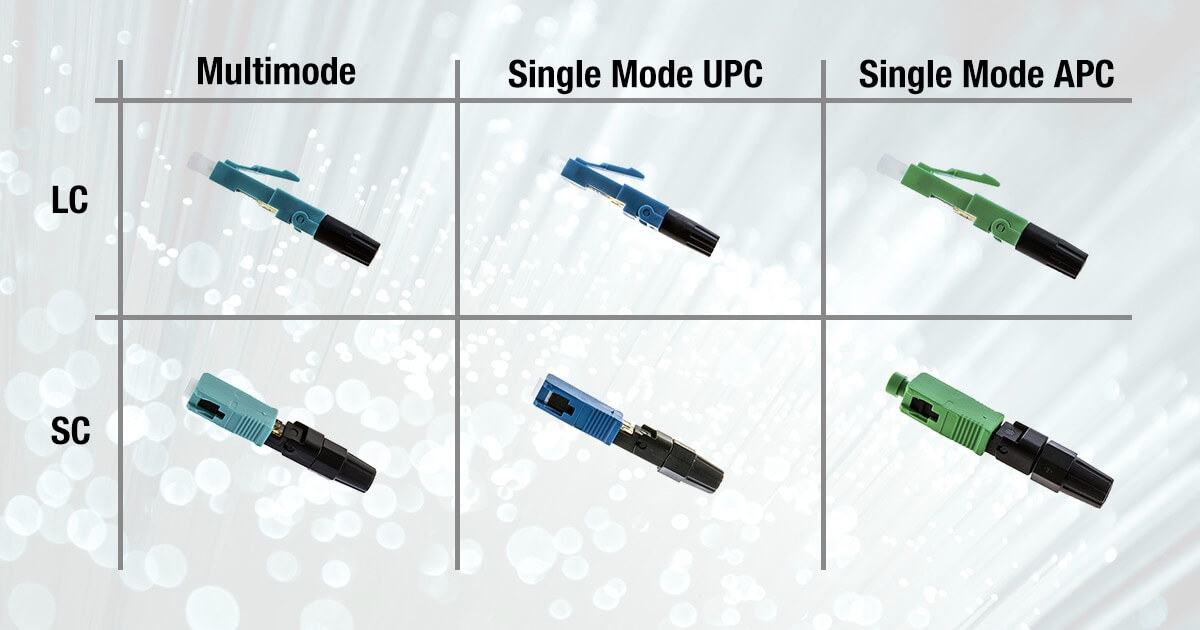
Optical Fiber Connector Type
Fiber Connectors Connect with Adapter Panel: LC/SC/MTP/MPO/ST Fiber Connectors
A fiber optic connector, also known as a termination, joins two ends of fiber optic cables. These connectors use ferrules to hold the fiber cables together securely. Ferrules come in various designs, such as mating adapters with screws, bayonet connectors, or snap-together styles. Some ferrules have spring-loaded connectors for a constant force connection. Most connectors require deliberate effort to connect and disconnect, reducing the risk of accidental disconnections. Connectors can also link cables to converters or directly to devices served by the fiber optic cables.
Fiber connector types like LC, SC, MTP, MPO, and ST require an adapter panel for connection. These connectors are commonly used in data centers, telecom rooms, and enterprise networks.
- FC connector
FC (Ferrule Connector, meaning metal connector) fiber optic connector is usually a round metal boot, the fastening method is threaded, and it is mainly used on the distribution frame. In the earliest, FC-type connectors, the butt end faces of the ceramic pins used were planar contacts. This type of connector is simple in structure, easy to operate, and easy to manufacture, but the fiber end is more sensitive to dust and prone to Fresnel reflection, making it difficult to improve return loss performance. Later, this type of connector was improved, and the butt end surface of the spherical pin was used. The connector is generally round and threaded, and the external structure has not changed, so the insertion loss and return loss performance have been greatly improved.
The FC connector is generally used in telecommunication networks. Unlike the plastic-bodied SC and LC, the FC connector utilizes a round screw-type fitment made from nickel-plated or stainless steel. There is a nut screwed onto the adapter. The advantage is that it is reliable and dust-proof, and the disadvantage is that the installation time is slightly longer. It is generally used on the ODF side (mostly used on distribution frames, and also mostly used in optical transceivers).
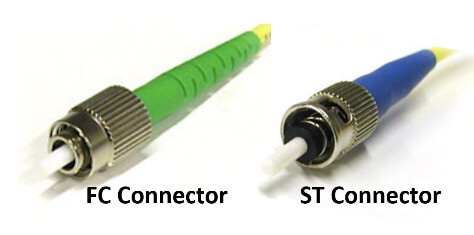
- ST connector
ST (Straight Trip) fiber optic connector is also circular, and the structure size of the ferrule and coupling boot used is exactly the same as that of the FC type. The difference is that its ferrule end face mostly adopts PC, or APC grinding method; and the fastening method is a turnbuckle. This type of connector is suitable for various optical fiber networks, easy to operate, and has good interchangeability. After the ST head is inserted, it is fixed by a bayonet after rotating half a circle. The disadvantage is that it is easy to break. ST connector is often used in optical fiber distribution frames. For 10Base-F connections, the connector is usually ST type. - LC connector
LC (Lucent Connector) fiber optic connector is developed by the famous Bell company to meet customers’ requirements for connector miniaturization and high-density connection. LC-type optical fiber connectors compress the space required for panels, wall panels and distribution boxes in the entire network, making it occupy only half the space of traditional ST and SC connectors. At present, in terms of single-mode SFF (Small form factor), LC-type connectors have actually occupied a dominant position, and their applications in multi-mode are also growing rapidly.
LC fiber optic connector adopts a modular RJ ( registered jack) latch mechanism that is easy to operate production. The SFP optical module defaults to the LC interface.

- MT-RJ connector
MT-RJ (Mechanical Transfer Registered Jack) fiber optic connector is a small fiber optic connector developed by the American AMP company. It is also a small connector developed to meet the growing demand of users for miniaturized, low-cost, and easy-to-use fiber optic connector products. Like the LC connector, it compresses the space required for active equipment, panels, wall panels and wiring boxes in the entire network, making it occupy only half the space of traditional ST and SC connectors (the same size as LC connectors), thus improving the economical applicability, especially suitable for fiber-to-the-desktop applications. It has the same latching mechanism as the RJ-45 style connector (RJ-45 crystal head), and the fiber is aligned by guide pins mounted on both sides of the miniature ferrule. In order to facilitate the connection with the optical signal transceiver, the optical fiber at the end face of the connector is designed as a double-core arrangement (the interval is 0.75mm, and the RJ-45 crystal head is a single-core arrangement). It is a high-density optical connector mainly used for data transmission, fiber optic routers and most used on switches.

MT-RJ is a square optical fiber connector with integrated transceiver, one end with dual fiber transceiver. The outer part of the connector is a precision plastic part, including a push-pull plug-in clamping mechanism. MT-RJ optical fiber connector is suitable for indoor applications in telecom and data network systems. - SC connector
The shell of the SC fiber optic connector is square, and the structure size of the ferrule and the coupling boot used are exactly the same as those of the FC type. The end faces of the ferrules are mostly PC-type or APC-type grinding. The fastening method adopts the plug-in pin latch type without rotation. SC connector is for connecting GBIC optical modules, and is mostly used on routers and switches. It is directly plugged and unplugged, which is very convenient to use, but the disadvantage is that it is easy to fall out.
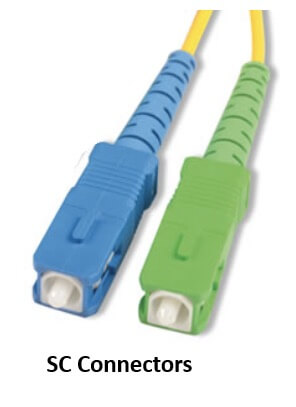
- MU connector
MU (Miniature Unit Coupling) fiber optic connector is the world’s smallest single-core fiber optic connector developed on the basis of SC connectors. The diameter of the plug used is 1.25mm, and the size from the plug to the installation is reduced by half compared with the SC connector, so the density of the MU fiber optic connector in the optical cable distribution frame is greatly improved. It is a connector widely used on ODF (optical distribution frames).
 MTP/MPO fiber optic connector
MTP/MPO fiber optic connector
MTP/MPO fiber optic connector is a special type of multi-fiber connector. The structure of the MPO connector is relatively complicated, and it connects 12 or 24 optical fibers in a rectangular optical fiber ferrule. It is usually used in high-density connection scenarios, such as data centers.
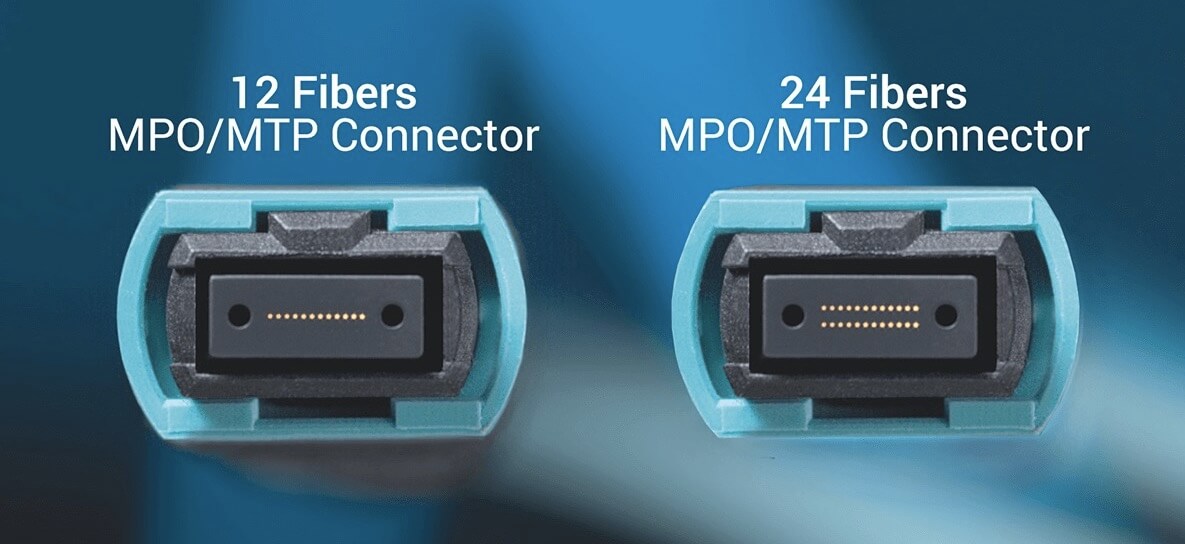
Fiber Mode: Single Mode vs. Multimode Fiber Connectors
Single mode fiber allows only one light mode at a time, while multimode fiber can transmit multiple modes simultaneously. This difference affects the connectors used for single mode and multimode fibers. However, with advanced technologies, fiber optic connectors like SC, LC, and FC, offered by fiber optic connector factories, are now compatible with both single mode and multimode fiber cables.
Fiber Count: Simplex vs. Duplex Fiber Connectors
A simplex connection allows signals to be transmitted in one direction only, using two simplex connectors and a simplex fiber cable to send a signal from device A to device B. The signal cannot return from device B to device A using the same route. On the other hand, a duplex connection achieved through duplex connectors and duplex fiber cable enables bidirectional transmission. A simplex fiber optic connector is typically connected with one strand of fiber, while a duplex fiber optic connector requires two strands of fibers.

Polishment: APC/PC/UPC Fiber Optic Connectors
Fiber optic cable connectors come in three types based on polishing: PC (physical contact), UPC (Ultra Physical Contact), and APC (Angled Physical Contact). They can be identified by their color codes: PC connectors are black, APC connectors are green, and UPC connectors are blue. Each connector type has different structures and performance characteristics, affecting insertion loss and return loss values. Usually, the insertion loss of PC, UPC, and APC connectors is less than 0.3dB. However, UPC connectors have the lowest IL due to the smallest air gap while APC connectors have the highest RL due to the beveled fiber end-face.
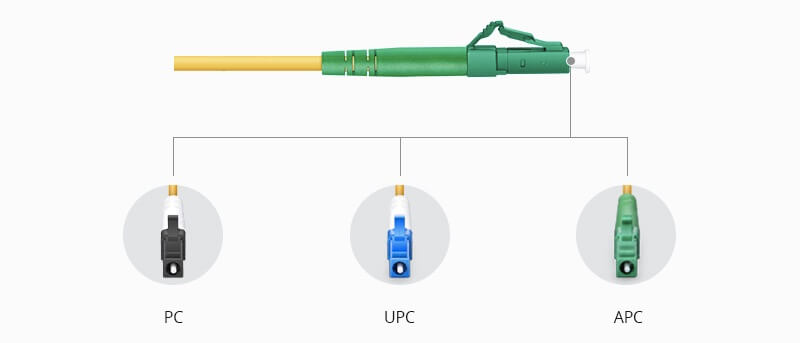
Small Form Factor Fiber Optic Connectors
Since the 1990s, small form factor (SFF) fiber optic connectors have been developed to fit into tight spaces and enable denser packing of fiber connections. They use 1.25mm ferrules, making them smaller than ST, SC, and FC connectors. Some are based on MT-type ferrules for multi-fiber connections.
Common SFF connectors include LC, MU, E2000, and MT-RJ with a push-and-latch design that works well for duplex connections.
How to Choose Optical Fiber Connector?
- Appearance
The fiber optic connector listed above are only the typical appearance of one model product, and the corresponding products of different brands and models may have some differences in appearance. For example, some interfaces are longer and some are shorter; some connector jackets are made of metal, while some are made of plastic or ceramics. There are also single and multi-mode. However, no matter which brand or model it is, the basic structure of the corresponding type of connector must be the same. - Construction
Typically, there are three main components to the construction of a connector, including boot, body and ferrule.
Through the function of the fiber optic connector, it can be seen that the core component that affects the performance of the connector is the ferrule. The quality of the ferrule directly affects the precise center connection of the two optical fibers. Ferrules are made of ceramic, metal or plastic. Ceramic ferrule is widely used. The main material is zirconia, which has the characteristics of good thermal stability, high hardness, high melting point, wear resistance and high processing precision.
The boot is another important part of the connector, and the boot plays an alignment role to facilitate the installation and fixation of the connector. The inner diameter of the ceramic boot is slightly smaller than the outer diameter of the ferrule, and the slotted boot clamps the two ferrules together for precise alignment.
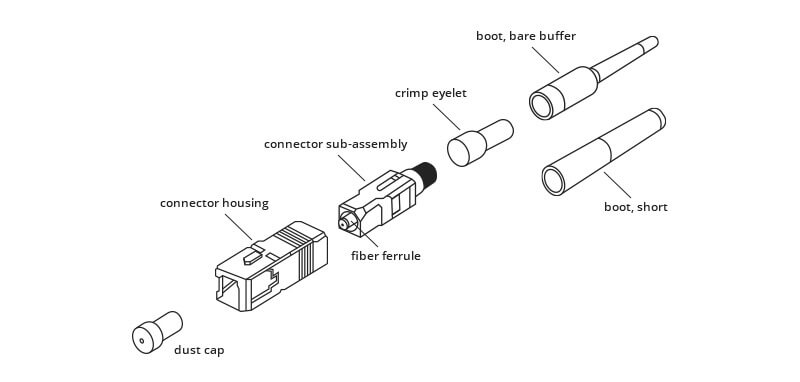
- Adapter
Since there is a connector, there must be an adapter interface to match and connect with these connector plugs, just like the LAN RJ-45 crystal head must have an RJ-45 network interface on the network card, distribution frame, switch, or there is an RJ-45 network interface on the router and other equipment, which is the same as the appropriate connection. The optical fibers are connected by adapters through their internal open boots. LC fiber optic connector is especially for connection with SFP and SFP+ fiber optic transceivers. - Application
SC connector is probably the most commonly used fiber optic connector today, mainly due to its low-cost design. LC fiber optic connector is also a commonly used fiber optic connector. FC connector is mostly used in single-mode fibers, and is relatively rare in multi-mode fibers. The intricate design and use of metal make it relatively expensive. ST fiber optic connectors are commonly used in long and short distance applications, such as campus and building multimode fiber applications, enterprise network environments and military applications.
In a word, we mainly distinguish these different connector types by their appearance and purchase them in combination with the corresponding adapter interface. Also, pay more attention to the ferrule when purchasing. At last, identify and reasonably apply them in actual optic network systems.


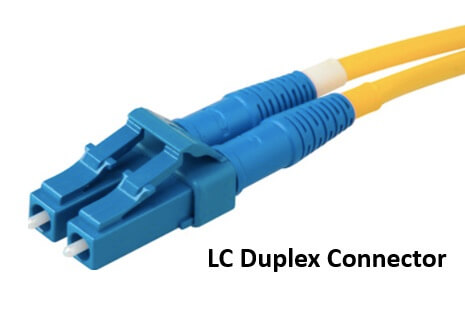
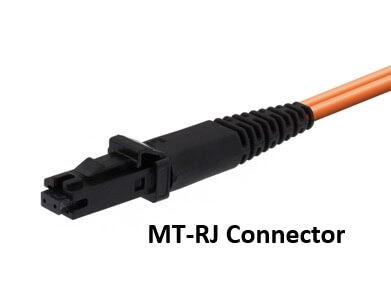
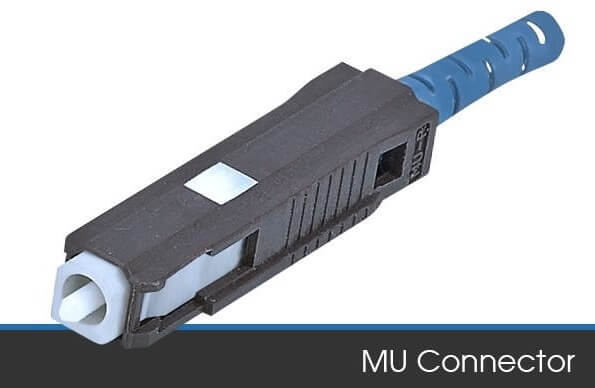 MTP/MPO fiber optic connector
MTP/MPO fiber optic connector

